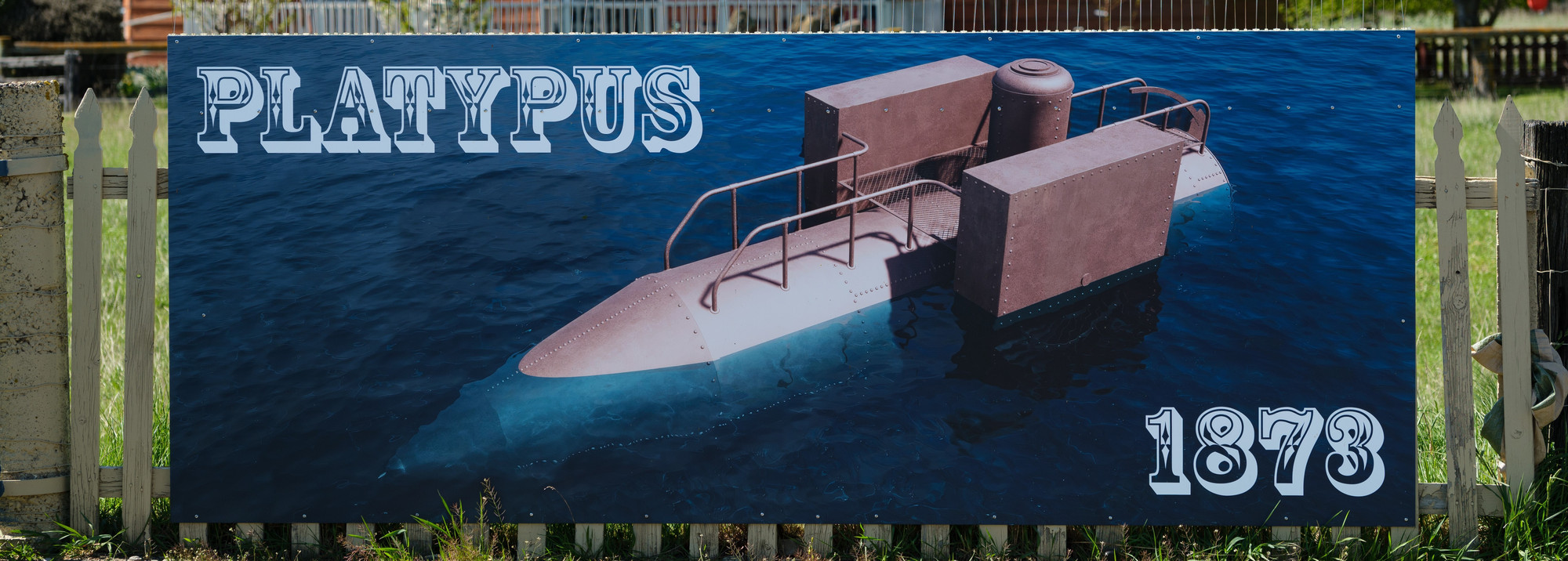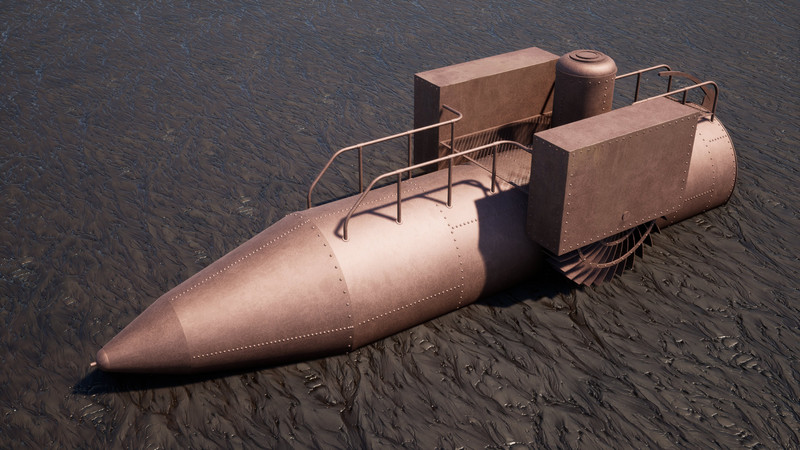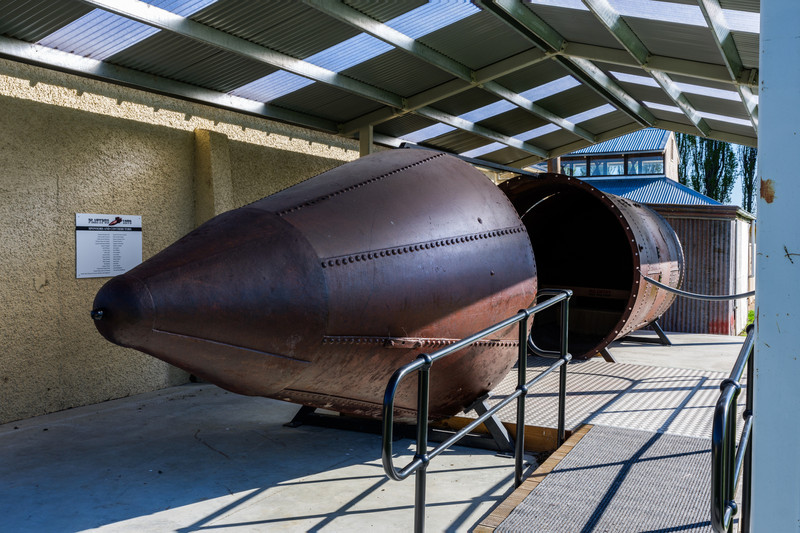Middlemarch's amazing Platypus submarine
In the 1980s, John Ingram, a teacher at Strath Taieri School, became fascinated by the
story of Barewood, one of the closest gold mining settlements to Middlemarch. While
exploring the scattered metal debris near the mine shafts he noticed an unusual
shaped object lying in the tussocks, near a pine tree. The closed pointed end was unlike
other remnants of the past. Nearby was another cylindrical, open ended, iron shape. He
then learned of a tank at the station manager’s house which matched the diameter of
the other pieces of scrap. This led to gradual discovery of the story of the “Platypus”, and
eventually its reconstruction as a submarine at the Middlemarch Museum.
Gold and the hunger for riches spurred a Frenchman to design a submarine and have it
built in Dunedin in 1873. It was intended to access the beds of deep flowing Central
Otago rivers. As a non powered submarine it worked, enabling material to be brought
inside and messages to be released through an air lock. As a commercial venture it
failed, leaving many questions to be answered about the company which sold shares
and promoted the undertaking.
This is possibly one of only two submarines of that era still in existence. In the history of
submarine development it has global significance.
There is a missing section, possibly buried below the Dunedin Hospital construction
site, which adds another dimension to the story of the Platypus,
Middlemarch's submarine.
Not only were the remains of the submarine discovered near Middlemarch, but we have
also been fortunate in having Peter Sparrow, great grandson of the maker, Joseph
Sparrow, work on its conservation at our museum.
For a more






